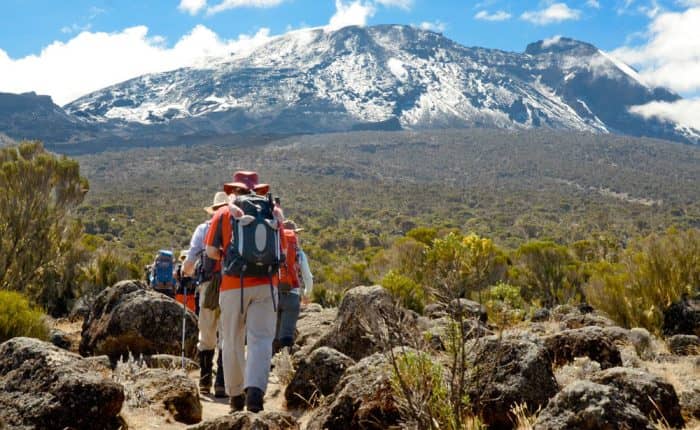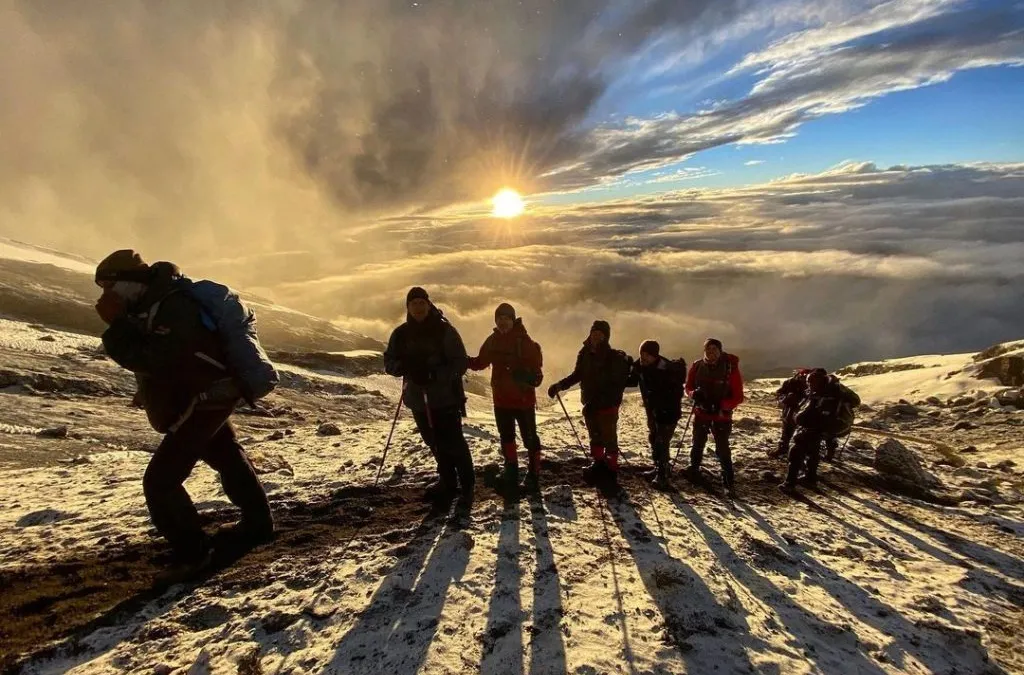KILIMANJARO ACCLIMATIZATION
Acclimatization and Altitude
MOUNT KILIMANJARO HEALTH-ISSUES
Acclimatization Kilimanjaro:
Acclimatization, which is an essential process for individuals planning to climb higher altitudes, deserves to be emphasized for its significance in increasing the survival chances of climbers. To elaborate further, acclimatization works by initiating several physiological adaptations by the body when exposed to lower oxygen levels in the air. These adaptations include an increase in respiratory rate, heart rate, and a decreased urine output to preserve more fluid in the body. However, acclimatization can only be achieved after spending time at various levels of altitude before progressing higher, usually necessitating a prolonged stay at moderate altitudes to allow the body to adjust fully. Without acclimatization, the body can fail to cope up with lower levels of oxygen, and climbers may experience altitude sickness, which can lead to severe symptoms and, in rare cases, fatalities. Therefore, acclimatization must be given adequate attention and factored into planning when considering climbing high altitudes.
High altitude trekking can be an exhilarating and unforgettable experience, but it is important to understand and acknowledge the risks associated with it. Mount Kilimanjaro is no exception, and it is crucial to be aware of potential health hazards that can arise during your trek, mainly Acute Mountain Sickness (AMS), also known as altitude sickness or altitude illness. While on Kilimanjaro, you must be prepared for its severe forms, namely High Altitude Cerebral Edema (HACE) and High Altitude Pulmonary Edema (HAPE), which pose significant health risks during high altitude expeditions. With this in mind, we have created a comprehensive resource for those looking to climb Kilimanjaro, featuring a detailed overview of the acclimatization process, and an outline of the altitude sickness symptoms you may encounter on your trek. We have also provided information on helpful medications like Diamox for the prevention of altitude sickness. Take this information seriously and enjoy an unforgettable experience on Mount Kilimanjaro with the peace of mind that you are prepared!
Acclimatization is best understood by looking at the relationship between oxygen in the air, air density and altitude changes.
At sea level, oxygen accounts for about 21% of air and barometric pressure is around 760 mmHg (millilitres of mercury). As one climbs in altitude the amount of oxygen in the air remains about the same (up to approximately 21,000 meters or 69,000 feet), however, air density drops and thus less pressure is put on packing oxygen molecules closer together (imagine oxygen molecules moving further and further away as altitude increases).
For example, at about 3,600 meters (12,000 feet), barometric pressure is around 480 mmHg. With less air density, oxygen molecules are more widely dispersed in any given column of air and hence less oxygen is available per breath.
The body deals with this decrease in available oxygen by breathing faster and deeper (even at rest) so as to increase the oxygen content in the blood (i.e. blood oxygen saturation or SO2).
The chart below shows the typical profile of oxygen saturation in an average person’s blood as one ascends to higher altitudes. For the average person, you can see that blood oxygen saturation (SO2) decreases to nearly 80% at 6,000m (just above Kilimanjaro’s summit).
On Kilimanjaro, there are three altitude zones: high, very high, and extreme altitude. Most people can climb up to 2,400 metres without feeling the effects of altitude. However, when you enter the high altitude zone, the air is thinner, and there is less oxygen. It is hard to know who will be affected by these changes, and it’s not related to factors like age, fitness level or gender. Climbing too high, too fast, dehydration, and overexertion can cause altitude sickness. To avoid this, climbers should avoid going too high too quickly, not push themselves too much, and drink enough water. Some climbers call this the acclimatization line.
Trekking Kilimanjaro isn’t very risky if you follow some basic rules. If you can, get used to the altitude before climbing by trekking Mount Meru nearby. If you don’t have much experience trekking at high altitudes, choose the seven-day Machame or 7/8-day Lemosho routes to Kilimanjaro. Make sure the path allows for climbing high and sleeping low, which both the Machame and Lemosho routes do. Take it slow and don’t overexert yourself. Drink lots of fluids, avoid drinking alcohol, smoking, taking stimulants, or having caffeine. It’s advised to take acetazolamide (Diamox). Remember the 3 Golden Rules by Altitude.org: if you feel sick, assume it’s altitude sickness; don’t go higher if you’re feeling sick; if it gets worse, go down immediately.
Diamox is a drug that can help to prevent altitude sickness. It makes the blood more acidic, causing the body to breathe deeper and get more oxygen. This helps to prevent altitude sickness symptoms, but it is not a cure. Diamox is a prescription medication, and it is important to talk to your doctor before taking it. Some people may experience side effects such as frequent urination, numbness or tingling in the fingers and toes, changes in taste, nausea, vomiting, diarrhea, drowsiness and confusion. Diamox should be taken for 2-3 days 2 weeks before climbing Kilimanjaro to test for any potential side effects. The recommended dosage is half a tablet in the morning and half in the evening, starting one day before arriving and continuing during the ascent. It should not be taken during descent.
MOUNT KILIMANJARO HEALTH-ISSUES
Introduction
Your summit attempt is really the big day. You will finally know whether you will walk on the roof of Africa, or at least be able to say that you tried. Of course, you want to make it to the summit.
Please note Each client that books with ‘Outstanding Tanzania Safari‘receives a comprehensive 2-page health guide that addresses all the health issues related to climbing Kilimanjaro.
Acute Mountain Sickness is also referred to as “Altitude Sickness”, and as the name indicates the illness is commonly encountered at exceptionally high altitudes, such as the summit area of Mount Kilimanjaro. AMS, once apparent, can be most effectively treated by immediately taking the affected person to a lower altitude. Often a drop as little as 500m will be sufficient. The symptoms of AMS include in the order normally experienced; headaches, nausea, anorexia, exhaustion, lassitude, rapid pulse, insomnia, swelling of the hands and feet and reduced urine output. Climbers can take precautions to at least minimize the severity of the illness, by maintaining a slow steady pace from day one, including an extra day of acclimatization at a high altitude and by drinking at least 3-4 liters of water every day. Preventative medicine is also available and you should consult your physician for specialist advice. Fluid build-up may cause a condition known as edema (or edema), which can affect the lungs (pulmonary), preventing effective oxygen exchange, or affect the brain (cerebral) which will result in the swelling of the brain tissue. The latter can be lethal if not treated immediately or if symptoms are ignored. Probably 70% of all people climbing Kilimanjaro will suffer to some extent from AMS. You should familiarise yourself with this condition and take preventative care.
Hypothermia or exposure is the lowering of the body’s core temperature. Once again prevention is the best cause of action. The correct equipment and clothing are critical in the prevention of Hypothermia. Do not allow your clothing to get wet from either rain or perspiration.
The treatment of hypothermia is relatively simple. Get the victim into a sheltered area as quickly as possible, remove all wet clothing and place the victim inside two or three sleeping bags, preferably with another person to help heat the victim.
About 55% of the earth’s protective atmosphere is below an altitude of 5000m. Far less ultraviolet light is being filtered out, making the sun’s rays much more powerful, which could result in severe sun burning of the skin. It is strongly recommended to use a 20+ sun protection cream at lower altitudes, and a total block cream above an altitude of 3000m. It is also important to wear dark sunglasses preferably with side panels above 4000m in the daytime and essential when walking through snow or ice. Snow blindness can be very painful and will require your eyes to be bandaged for at least 24 hours.
Any climber who suffers from any cardiac or pulmonary problems should be cautious and should not attempt to climb the mountain unless they have consulted their physician. It is strongly recommended that a physical fitness program is followed to prepare yourself physically for the mountain.
Poor fitting, new or little used boots will result in blistering feet. Even if boots are only slightly too small, your toes will get bruised, particularly on you descend. It is it therefore also important to keep your toenails short for the climb. Developing blister should be treated immediately as soon as the “hot spot” is felt. Remove the boot and cover the area with a zinc oxide tape or something similar.



